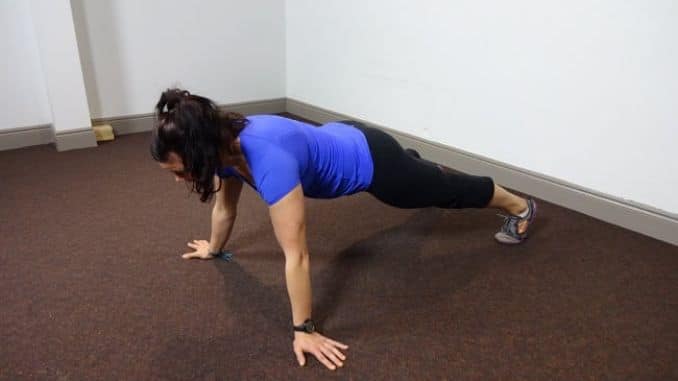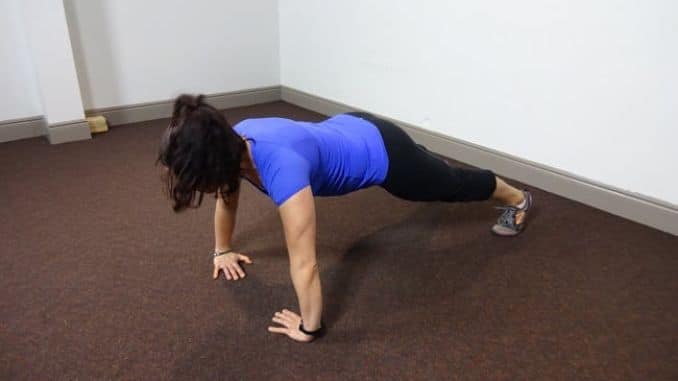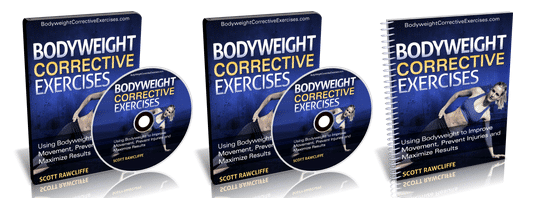
Bodyweight corrective exercises are not overly complex, but the way we perform the movements makes them challenging enough to be effective. Even though these moves are generally very simple, making mistakes while performing them is still possible.
Hey, this is Rick.
I am still riding high from the conference this past weekend.
One of the cool things that happened to me was one of the attendees, Brian Nguyen, came up to me after my presentation to tell me he is the trainer for Mark Wahlberg and that he has been using my Fix My Shoulder Pain program with him with great results!
Awesome!
That was very cool to hear.
Excellent to hear that all my hard work in designing these programs is helping people out.
Today I have a guest article from Scott Rawcliffe of Bodyweight Corrective Exercises.
Scott has a great article on common bodyweight exercise mistakes.
Enjoy!
Take it away, Scott.
Rick Kaselj, MS
Top 2 Bodyweight Corrective Exercise Mistakes
Bodyweight training has become one of the hottest trends in fitness over the past couple of years. However, this is by no means a new training style, as it’s been around for a long time. Despite lecturing worldwide, I see fitness professionals repeatedly make the same two mistakes.
1. Most of these trainers either stick with the basic exercises everyone knows or give their clients some advanced exercise that does more harm than good.
2. They lack progressions and the understanding that you can use bodyweight exercises to build symmetry in your clients and correct muscle imbalances effectively.
Since you’re an EFI reader, you understand the importance of a balanced training program. I know you’re not one of these trainers or exercise enthusiasts that I continue to see giving out exercises that may cause injury. I wanted to share a new perspective on how you can look at tweaking bodyweight exercises with your clients.
Tweaking Bodyweight Exercises
You can enhance the results of certain exercises simply by altering the body’s angle or position. And if you get flashbacks to your high school physics class at any point, don’t worry; it’s a good thing because we’re just applying basic physics to your bodyweight exercises.
Let’s take the traditional push-up to start with. You all know that if you change the angle of your elbows by bringing them closer to your body. You will stress the triceps much more, aka the close grip push-up.
But what would happen if you were to change the position of your hands?
If you were to externally rotate your arms (turn your fingertips away from your body, so they are pointing laterally) and slightly widen your hands while doing the push-up, your lats would be working a lot more than in a traditional push-up. If you don’t believe me, try three sets of these push-ups and feel the difference for yourself.
Or what if you decided to internally rotate your arms (fingertips pointing towards each other); what effect would that have on your body? When you point your fingertips towards each other, your triceps are forced to work harder because, by the time you are at the bottom position, your elbows are at their end range of flexion. This puts your triceps in a very disadvantaged position and forces them to do most of the work to lift your body off the ground. And voila, a great new variation of the push-up to overload the triceps.
You wouldn’t use these with just anyone. If your client has impingement issues at the shoulder, like a subacromial impingement, you will want to avoid this variation of the push-up. But this is to give you some new ideas on how you view bodyweight exercises.
Change to Core Exercises
Now, that was just one simple example of how little tweaks can completely change the muscles used with bodyweight exercises. You can do the same thing with numerous core exercises, as well as lower body exercises. I’m always tweaking my clients’ lower body exercises based on these principles because they work so well.
If you want even more of these variations, I’ve teamed up with Rick to create an entire product with over 44 different bodyweight corrective exercises. And if you use little tweaks like these, I’d love to hear about them.
To learn more about Bodyweight Corrective Exercises, click here:
Scott Rawcliffe
.




